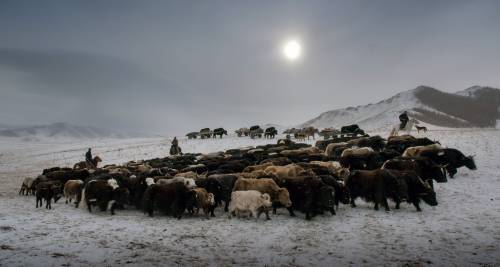Mongol nomad migration and its associated practices
Inscribed in 2024 (19.COM) on the Representative List of the Intangible Cultural Heritage of Humanity
 © National Center for Cultural Heritage under the Ministry of Culture of Mongolia (NCCH) and Tsahim Suvarga, 2023
© National Center for Cultural Heritage under the Ministry of Culture of Mongolia (NCCH) and Tsahim Suvarga, 2023 Mongolian nomadic culture is a way of life that is rooted in the interdependence between pastures, livestock and herders. To ensure the well-being of the livestock and the sustainability of the herders, proper pasture use is crucial. The families move between pastures, which are categorized based on factors such as amount of grass available, geography, climate and season. This approach has been passed down for generations as a means of giving the earth time to rejuvenate. The head of the household selects the date to relocate, and rituals are performed by all family members to prepare for the migration. This includes cleaning the area, disposing of waste, building carts, and preparing the animals. During the migration phase, the wife dresses in her finest clothes and leads the way to show her gratitude and respect for Mother Nature. Children start learning crucial skills for their nomadic lifestyle from a young age. This includes taking care of and selecting livestock, learning migration routes, and assembling and disassembling yurts. Every member of the family participates. The customs and routines of this nomadic culture facilitate communication and cultivate a strong sense of community amongst the herders. They also promote environmental stewardship, knowledge dissemination and peaceful coexistence.









